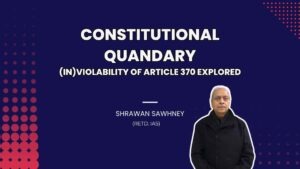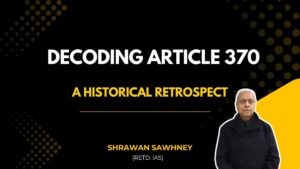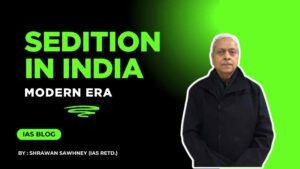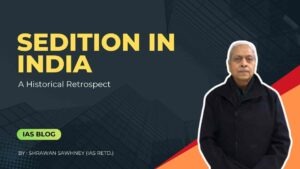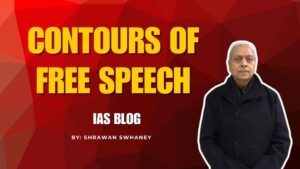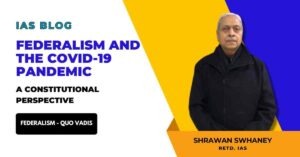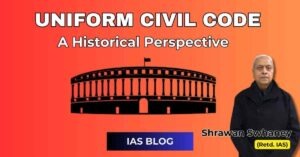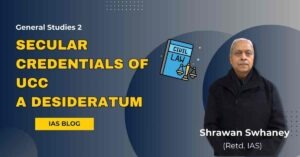Contours of Free Speech
Contours of Free Speech
Recent a spate of cases against stand-up comics Munawar Faruqui, Nalin Yadav, Edwin Anthony, politician Shashi Tharoor, journalist Rajdeep Sardesai and young climate activist Disha Ravi, have again questioned the relevance of repressive laws of all kinds, specially sedition and criminal defamation and there is a widespread outcry as to why these provisions, from the era of colonial regime, should not be scrapped.
Most recently, Supreme Court’s refusal to invoke sedition against Farooq Abdullah for his opposition to abolition of Article 370 again highlights the issue. These cases flag a fundamental infirmity in sedition law. It is alleged that police officers are prone to slapping charge of sedition against those whose actions and words incite opposition to the government, vitally ignoring the guidelines laid down by the Supreme Court in Kedar Nath Singh judgment, which require direct and immediate incitement to violence to qualify as sedition. There are calls for immediate safeguarding of the right to dissent – a basic feature of freedom of expression.
It is apposite to see the status of law of sedition globally. Upon recommendation of British Law Commission, given as far back as 1977, it was abolished by the Coroners and Justice Act, 2009, being considered a relic of a bygone era. New Zealand and Ireland, too, have done away with sedition clause in 2007 and 2009, respectively. In Australia, sedition clause was repealed and replaced in 2011 with another clause punishing offence of ‘urging violence’ against the lawfully elected government. Sedition remains a crime in the United States Code, a federal statute that punishes seditious conspiracy and outlaws advocating the overthrow of the federal government by force.
In this backdrop, a need to balance innate personal freedoms with the state’s existence is manifest. Contractarian school of thought, represented by Thomas Hobbes, John Locke and Jean Jacques Rousseau, propounds that society originated in a contract, explicit or tacit, to which individuals consented and so, removed themselves from the ‘state of nature’ and helped set in a regime of government under the laws. Most modern states profess to respect the vast congeries of civil liberties and are judged by the recognition and protection they provide for inalienable individual rights. The right to comment on public affairs and right to dissent are the touchstone of any free democratic society, yet if the comments wander off from criticism to calumny, they may impair the lawful governance of a State. The problem in such polities is to develop a just and workable reconciliation of two acknowledged goods – personal rights and community needs.
All legal systems recognise that at some point personal freedoms may be restricted. The difficulty is where and how to set that point so as to admit valid community claims and yet ensure the maximum of personal liberties. Various attempts have been made to formulate a rule or a test that would implement this premise. The “clear and present danger” concept (that speech can be restricted only when it threatens an immediate and serious evil) represents one such attempt; the “balancing test” (that speech can be restricted only when the state interest in suppression outweighs the private interest in freedom) represents another.
Constitutional arrangements for civil liberties offer several prescriptions, but two stand out: the British system where civil liberties are preserved by the traditions of governmental selfrestraint and the American system, with written bill of rights interpreted and enforced by judicial review. The device of a written bill of rights has been adopted by India and freedom of speech and expression has been made a fundamental right of a citizen, though this freedom must yield to public order. Munshi pleaded in Constituent Assembly to drop the word “sedition” from Article 13 (2) of the Draft Constitution [Article 19(2) of the Constitution of India] and substituted it by the term “which undermines the security of or tends to overthrow the state.”
In order to settle the then conflicting judicial opinions, the Constitution (First Amendment) Act, 1951 substituted Article 19 (2) and inserted the words “public order” in the Article. Thus, any reasonable restriction on freedom of speech and expression was made permissible in the interests of public order. Mr. Chief Justice BP Sinha held in Kedar Nath Singh’s case [AIR (1962) SC 955] that “Section 124-A strikes the correct balance between the fundamental rights and the interest of public order. We have no hesitation in so construing the provisions of Section 124-A as to limit their application to acts involving intention or tendency to create disorder, disturbance of law and order or incitement to violence.”
This interpretation of the Apex Court clearly indicates that intention (mens rea) of a speech or expression is vital and underlined a need to re-write Section 124-A. Echoing this, Law Commission of India has published a Consultation Paper On “Sedition” on 30th August 2018 in order to study revision of Section 124A. Law Commission expects a healthy debate amongst legal luminaries, lawmakers, government, academia, students, and above all, the general public will lead to public friendly amendment, because dissent and criticism of the government are essential ingredients of robust public debate in a vibrant democracy. A line must be drawn between criticism of government, which should be welcome, and incitement, which would undermine the security or order, or which is calculated to overthrow the state. In the words of KM Munshi “free speech includes not only the inoffensive but also the irritating, the contentious, the eccentric, the heretical, the unwelcome, and the provocative, as long as such speech does not tend to provoke violence.” Let us hope, the right balance will be struck between ‘rugged individualism’ and ‘collectivist society.’
By: Shrawan Sawhney (IAS Retd.)
The Views expressed by the author are personal.
Notes on Contours of Free Speech
1. Recent Controversies and Public Debate
High-profile Cases: Munawar Faruqui, Disha Ravi, Shashi Tharoor, Rajdeep Sardesai, and Farooq Abdullah have been recently targeted under sedition or similar laws.
Judicial Response: SC refused to invoke sedition against Farooq Abdullah for criticizing abrogation of Article 370.
Issue Raised: Use of sedition law to suppress dissent; bypassing Supreme Court’s Kedar Nath Singh (1962) guidelines.
2. Kedar Nath Singh Judgment (1962) – Key Takeaway
Sedition (Section 124A IPC) is constitutional only when:
There is direct incitement to violence or
A tendency to create public disorder.
Mere criticism of the government is not sedition.
3. Global Status of Sedition Laws
| Country | Status of Sedition Law |
|---|---|
| UK | Abolished in 2009 (Justice Act, based on 1977 Law Commission report) |
| Ireland | Repealed in 2009 |
| New Zealand | Abolished in 2007 |
| Australia | Replaced in 2011 with law on “urging violence” |
| USA | Sedition still punishable under federal law (focus on conspiracy and violent overthrow) |
4. Philosophical Context: Social Contract Theory
Thinkers: Hobbes, Locke, Rousseau
Core Idea: Citizens surrender some freedoms for governance and security.
Challenge in Democracies: Balancing personal liberty with collective order.
5. Legal Tests to Balance Free Speech and Public Order
Clear and Present Danger Test: Restriction allowed only if speech poses an immediate and serious threat.
Balancing Test: Restriction justified if public interest outweighs private freedom.
Comparative Systems:
UK: Relies on tradition and self-restraint.
USA & India: Rely on written Bill of Rights and judicial review.
6. Constitutional Evolution in India
Constituent Assembly: KM Munshi argued to remove “sedition” from Draft Article 13(2).
First Amendment (1951):
Inserted “public order” into Article 19(2).
Enabled reasonable restrictions on freedom of speech in the name of public order.
7. Law Commission’s Viewpoint
2018 Consultation Paper on Sedition:
Questions relevance of Section 124A IPC in a democratic society.
Calls for public debate and potential reform.
Emphasizes distinguishing dissent from incitement.
8. Ethical & Democratic Perspective
KM Munshi’s View: Free speech includes not just inoffensive but irritating, eccentric, heretical, provocative speech—unless it incites violence.
Democratic Norms: Dissent and criticism are core to public debate and governance accountability.
Challenge: Prevent misuse while ensuring national security.
9. Way Forward
Review & Reform Section 124A IPC to align with democratic values.
Safeguard dissent through clear guidelines and judicial oversight.
Train law enforcement to apply sedition only per SC guidelines.
Ensure robust public debate to maintain a vibrant democracy.
Mains-Based Questions on Contours of Free Speech
Question 1:
“Sedition law in India is a colonial vestige that curtails free speech and dissent.” Critically examine in the light of recent events.
(GS Paper 2 – Polity, Governance, Constitution)
Answer Framework:
Introduction:
Mention the colonial origin of Section 124A of the IPC.
Reference recent cases (e.g., Munawar Faruqui, Disha Ravi) as examples of misuse.
Body:
A. Historical and Legal Context:
Enacted in 1870 to suppress dissent during British rule.
Kedar Nath Singh (1962) judgment upheld its constitutionality with strict safeguards (incitement to violence is a must).
B. Misuse in Recent Times:
Filed against comedians, journalists, activists, and politicians.
Often ignores Kedar Nath guidelines—used as a tool for harassment.
C. Global Comparisons:
UK, Ireland, NZ have repealed sedition laws.
Australia replaced it with laws targeting actual violence.
USA retains sedition in limited, violence-based contexts.
D. Constitutional & Democratic Concerns:
Violates Article 19(1)(a) – Freedom of Speech.
Restrictions allowed under 19(2) must be “reasonable.”
Law Commission (2018) recommended a public debate and possible repeal/amendment.
Conclusion:
Sedition law must be redefined or repealed in line with democratic principles.
Freedom of dissent is vital for a vibrant democracy.
Need for legal clarity to differentiate criticism from incitement.
Question 2:
“Freedom of speech is not absolute but must be protected to preserve democratic values.” Examine with reference to sedition law in India.
(GS Paper 2 – Polity, Governance)
Answer Framework:
Introduction:
Highlight importance of free speech in a democracy (Article 19(1)(a)).
Yet reasonable restrictions under Article 19(2) are constitutionally permitted.
Body:
A. Legal Balancing Act:
First Amendment (1951) introduced “public order” as a ground for restriction.
Kedar Nath Singh case ensured sedition is applicable only in case of violence/incitement.
B. Tests of Validity:
“Clear and Present Danger Test.”
“Balancing Test” – when state interest outweighs individual liberty.
C. International Practices:
Democracies prefer narrow and clear laws (e.g., Australia’s law on urging violence).
UK and Ireland have moved away from sedition laws.
D. Ethical Dimension:
KM Munshi: Speech must accommodate the controversial and provocative unless violent.
State must tolerate criticism to retain moral legitimacy.
Conclusion:
Sedition law needs urgent reform or repeal to avoid misuse.
Rule of law must ensure citizens are not silenced under vague pretexts.
Freedom with responsibility is the foundation of any democracy.
Question 3:
Discuss the challenges in balancing the individual’s right to dissent with the state’s duty to maintain public order. How has Indian judiciary addressed this tension?
(GS Paper 2 – Constitution, Governance)
Answer Framework:
Introduction:
Dissent is a democratic necessity.
Public order is essential for governance.
The conflict arises when the two intersect.
Body:
A. Constitutional Basis:
Article 19(1)(a): Right to freedom of speech.
Article 19(2): Grounds for reasonable restrictions (including public order, security).
B. Judicial Interpretation:
Kedar Nath Singh (1962): Sedition applicable only when speech incites violence or disorder.
SC struck balance: Criticism ≠ Sedition.
Farooq Abdullah case: SC refused to invoke sedition for political opinion.
C. Ground Reality:
Police often misuse sedition law without meeting legal thresholds.
Political dissent is often criminalized.
D. Reforms Needed:
Clear SOPs for police and judiciary on sedition application.
Law Commission (2018): Called for public debate and potential repeal.
Replace sedition with narrowly defined laws on incitement and violence.
Conclusion:
Indian democracy must protect dissent within constitutional limits.
Judiciary plays a crucial role but legislative clarity is needed.
True democracy balances both individual rights and state interests.
Prelims Questions based on Contours of Free Speech
-
Constitutional Quandary: Inviolability of Article 370 Explored
Upon adoption of the Constitution of India, the preamble proclaimed,... -
Decoding Article 370 – A Historical Retrospect
The Apex Court is currently hearing petitions disputing the amendment... -
Sedition In India-Modern Era
English inhabitants in India requested the then Indian rulers to... -
Sedition In India – A Historical Retrospect
Sedition is perhaps the very vaguest of all offences known... -
Contours of Free Speech
Recent a spate of cases against stand-up comics Munawar Faruqui,... -
Generation-Z And Clout Culture
Generation Z, also known as Gen Z-ers and Zoomers, is... -
Community Resources :An Equitable Landscape
Community Resources: An Equitable Landscape Table of Contents Blog - Community... -
Federalism and the Covid-19 Pandemic: A Constitutional Perspective
Recently, an article in a leading English national daily made... -
Uniform Civil Code – A Historical Perspective
Article 35 of the draft Constitution of India provided that... -
Secular Credentials Of UCC – Shrawan Sawhney
Recently, the 22nd Law Commission of India has set the...


